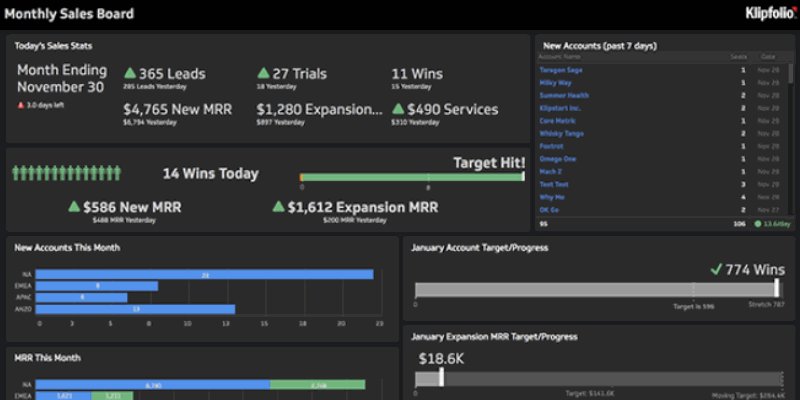A properly structured and functioning Board of Directors contributes significantly to the success of a company. For an effective Board, timely and robust board reporting covering performance is essential.
The role of a board of directors has evolved over the years: Instead of the old smoke-filled conference room gathering of the CEO’s family members, smart companies now treat their boards like a council of elders whose knowledge base can help set the tone for big-picture decision making.
Boards are really at their best when they’re providing guidance and insight at a higher level. Their strategic insights can help guiding performance & strategy towards the company’s best interests.
So what’s involved in a having a Board of Directors?
Legal obligations of the Board
Directors appointed to a company’s Board are bound by a number of legal responsibilities during their term.
- Director’s duties are defined in the Corporations Act, the Company’s constitution and through common law. The Corporations Act in particular sets out the following duties to (paraphrased);
- Prevent the company from trading whilst insolvent (i.e. unable to pay debts)
- Act with reasonable care and diligence
- Exercise their duties in good faith
- Not improperly use their position to gain an advantage for themselves or to the detriment of the company
- Act in good faith
Director’s duties arising from the company’s constitution will be specific to each enterprise.
In Australia, the Corporations Act requires that a proprietary company must have at least one Director (3 for Public companies) who is a natural person (i.e. not a corporation) and an Australian resident. Directors are appointed by the shareholders of a company at a General Meeting, or by the existing Directors.
The role and responsibilities of the Board
The Board (i.e. the Directors) direct the affairs of the company but do not manage at a detailed level. The Board is responsible for such matters as directing overall strategy (in conjunction with the CEO), monitoring results, approving key management proposals, setting policy and approving the appointment of key executives including the CEO.
Structure and composition
The size and composition of the Board depends on the size, nature and complexity of the company.
It is usual for smaller companies (up to $10m turnover) to have up to 3 Directors, while large companies can have 7 to 10 Directors. The number of Directors should be sufficient to provide a breadth of skills and experience but not so large as to become unwieldy.
Directors should have a range of skillsets – technical skills relevant to the company’s perations, professional skills in law, finance, etc. and general management skills and experience. The CEO is also often a Director or Managing Director.
Substantial shareholders will also often have the right to appoint a representative Director.
Board reporting
For a Board to function effectively it requires comprehensive, accurate and timely information. Common practice is for reports to be provided to the Board monthly.
- Board reports will usually be comprised of (at a minimum);
- CEO report describing progress against strategic objectives and KPIs, key project and product development progress, staff issues and any other significant matters.
- Financial report summarising financial performance for the month, progress for the year to date and against budgets or forecasts. cash flow and performance forecasts will often also be provided.
- Sales/Business Development report showing sales results for the month and year.
- Project status reports often highlight the progress of project with a red-yellow-green light indicator on these.
KPIs & Dashboards to show your progress
- One of the most widely used management methods for measuring and showing performance is through Key Performance Indicators (KPIs). KPIs are a set of values which are used to measure the key “drivers” of a business’ performance. KPIs will usually comprise both financial and non-financial values, for example;
- Financial – profit, sales, expenses, gross margin, cash
- Customer – number of customers, growth in customer numbers, retention, lifetime customer value, customer satisfaction (via Net Promoter Score)
- Employees – staff / sales ratio, staff satisfaction, turnover
- Product or service metrics – rate production, rate of defects, efficiency measures
Progress against KPIs is usually summarised in a “Dashboard” – a short form report detailing the KPIs, monthly progress, year to date progress, trend etc. Dashboards are increasingly displayed and updated online and in real time. Dashboard reporting platforms like Klipfolio & SmartSheet are popular for this purpose.

The Board of a company plays a critical role in its progress by guiding overall strategy and validating key proposals and decisions. If you need help with Board Reporting and Dashboards reach out to the seasoned team at Fullstack whom can help with outsourced CFO services.
Was this article helpful?
Related Posts
- Triple Bottom Line Reporting
There is a global trend towards greater corporate responsibility and accountability. Triple Bottom Line reporting…
- KPI Examples – The 50 Best KPIs for Growing Businesses
Key Performance Indicators (KPIs) are one of the most widely used methods for measuring and…
- 6 things your CFO should do in their first 30 days
A CFO fulfils a critical role within an organisation. Here are 6 areas an incoming…
- Equity Crowdfunding in Australia
Crowdfunding is making some big waves in recent times - we cover why many founders…

















